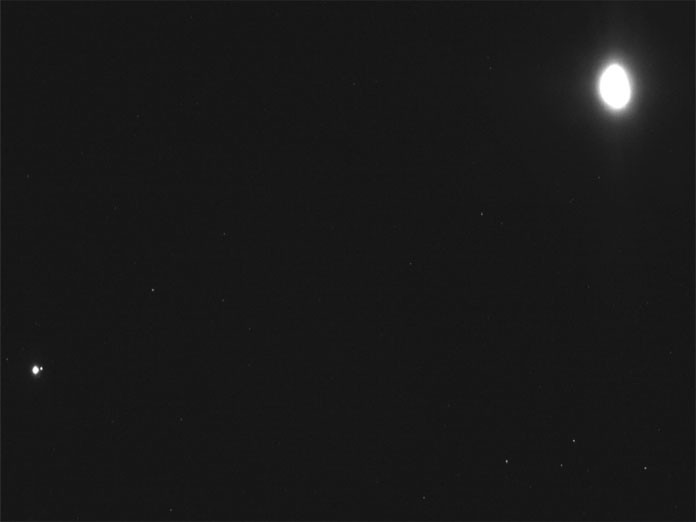Live
- Role of Telugus in framing statute noteworthy: CM
- New Year jolt to KTR; ED to grill on Jan 7
- Etikoppaka toys tableau to roll along Kartavya Path on Republic Day
- H-1B visa: Elon Musk, Ramaswamy face Trump supporters' wrath
- TG Assembly to pay homage to former PM Manmohan Singh
- Naidu, Lokesh & Revanth to join world leaders at Davos meet
- Nation bids adieu to Dr Singh
- Nitish Kumar Reddy Celebrates Century with Pushpa’s Iconic "Taggede Le" Gesture, A First for Telugu Cinema
- Garena Free Fire MAX Redeem Codes for December 28, 2024: Get Frostfire Bunny Bundle, Rose Emote, and Exclusive Rewards!
- Salman Khan Faces Off Against Samurais in Action-Packed Teaser for 'Sikandar'
Just In

The number of asteroid impacts on the Earth and the Moon increased by two to three times starting around 290 million years ago, according to a study
Toronto: The number of asteroid impacts on the Earth and the Moon increased by two to three times starting around 290 million years ago, according to a study.
The finding, published in the journal Science, challenges our understanding of a part of Earth's history by looking at the Moon, the most complete and accessible chronicle of the asteroid collisions that carved our solar system. "Our research provides evidence for a dramatic change in the rate of asteroid impacts on both Earth and the Moon that occurred around the end of the Paleozoic era," said Sara Mazrouei from the University of Toronto in Canada. "The implication is that since that time we have been in a period of relatively high rate of asteroid impacts that is 2.6 times higher than it was prior to 290 million years ago," Mazrouei said. It had been previously assumed that most of the Earth's older craters produced by asteroid impacts have been erased by erosion and other geologic processes.
However, the new research shows otherwise. "The relative rarity of large craters on Earth older than 290 million years and younger than 650 million years is not because we lost the craters, but because the impact rate during that time was lower than it is now," said Rebecca Ghent, an associate professor at the University of Toronto. "We expect this to be of interest to anyone interested in the impact history of both Earth and the Moon, and the role that it might have played in the history of life on Earth," Ghent said. Scientists have for decades tried to understand the rate that asteroids hit Earth by using radiometric dating of the rocks around them to determine their ages. Since it was believed erosion caused some craters to disappear, it was difficult to find an accurate impact rate and determine whether it had changed over time.
A way to sidestep this problem is to examine the Moon, which is hit by asteroids in the same proportions over time as Earth. However, there was no way to determine the ages of lunar craters until NASA's Lunar Reconnaissance Orbiter (LRO) started circling the Moon a decade ago and studying its surface. Using LRO data, the team was able to assemble a list of ages of all lunar craters younger than about a billion years. During the lunar night, rocks radiate much more heat than fine-grained soil called regolith. This allows scientists to distinguish rocks from fine particles in thermal images.
The team then calculated the ages for previously un-dated lunar craters. When compared to a similar timeline of Earth's craters, the researchers found the two bodies had recorded the same history of asteroid bombardment. "It became clear that the reason why Earth has fewer older craters on its most stable regions is because the impact rate was lower up until about 290 million years ago," said William Bottke, an asteroid expert at the Southwest Research Institute in the US. The reason for the jump in the impact rate is unknown, though the researchers speculate it might be related to large collisions taking place more than 300 million years ago in the main asteroid belt between the orbits of Mars and Jupiter. Such events can create debris that can reach the inner solar system, researchers said.

© 2024 Hyderabad Media House Limited/The Hans India. All rights reserved. Powered by hocalwire.com







